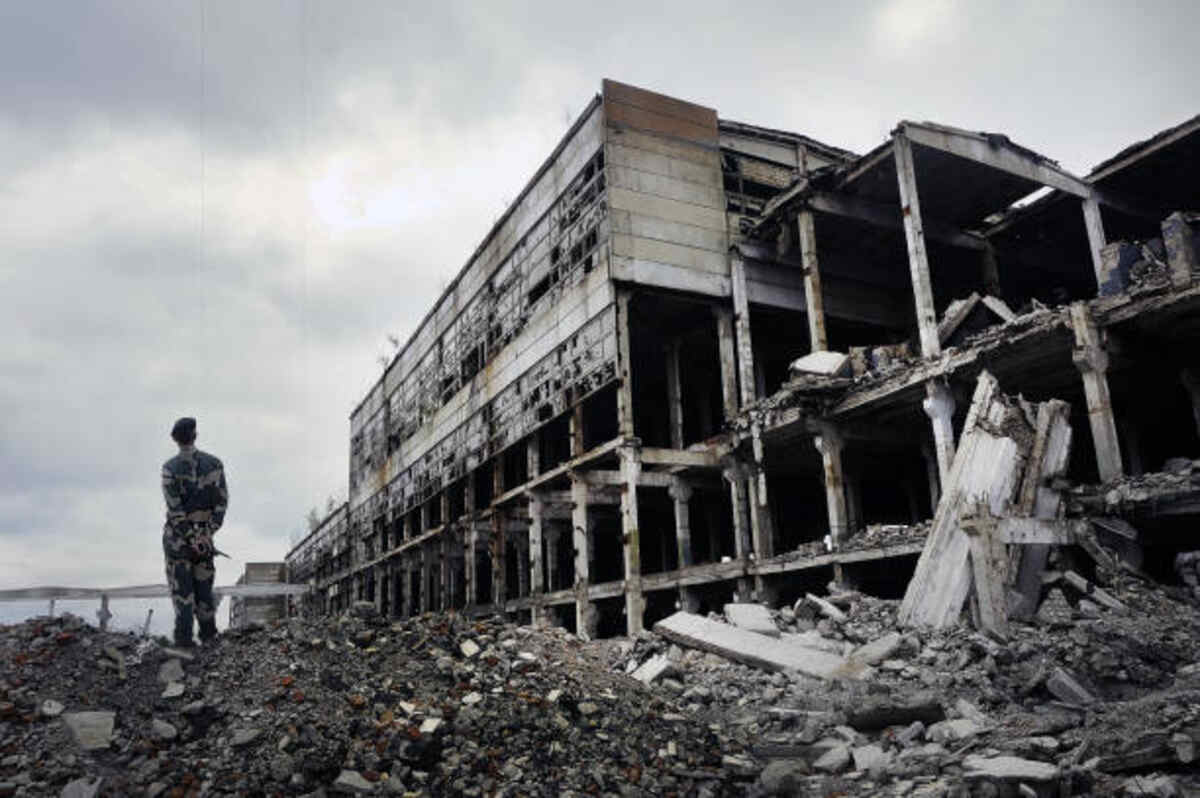Many a Syrian or Yemeni: Navigating the Refugee Crisis
Introduction
In today’s world, the plight of refugees has become an issue of global concern. Millions of people, including many Syrians and Yemenis, have been forced to flee their homes due to conflict, persecution, and other dire circumstances. This article aims to shed light on the challenges faced by these displaced individuals and the broader refugee crisis. We will explore the reasons behind their displacement, the struggles they encounter, and the international response to this humanitarian crisis.
Understanding the Refugee Crisis
The refugee crisis stemming from Syria and Yemen has been one of the most pressing humanitarian challenges of recent years. Millions of Syrians and Yemenis have been forced to flee their homes due to armed conflicts, violence, and economic instability in their respective countries. This article aims to shed light on the causes and consequences of this crisis, as well as the global response to it.
Causes of the Refugee Crisis:
- Conflict and Violence: In Syria, a brutal civil war has been ongoing since 2011, leading to widespread violence, displacement, and destruction. Similarly, Yemen has been gripped by a conflict that began in 2014, further exacerbated by regional tensions. These conflicts have been the primary drivers of the refugee crisis.
- Economic Instability: Economic hardships, including high unemployment rates and soaring inflation, have added to the woes of Syrians and Yemenis. Many have been pushed to leave their countries in search of better living conditions.
- Lack of Basic Services: Access to essential services such as healthcare, education, and clean water has become increasingly scarce in both countries due to the ongoing conflicts, forcing people to seek refuge elsewhere.
Consequences of the Refugee Crisis:
- Humanitarian Suffering: The refugee crisis has resulted in immense human suffering, with millions of people living in overcrowded camps or precarious conditions in host countries. Many face a lack of food, shelter, and medical care.
- The strain on Host Countries: Neighboring countries such as Turkey, Lebanon, Jordan, and Saudi Arabia have taken in a significant number of refugees, straining their resources and infrastructure.
- Global Implications: The refugee crisis has had far-reaching global implications, including political tensions, security concerns, and strained international relations.
Global Response:
- Humanitarian Aid: International organizations, governments, and NGOs have provided humanitarian aid to alleviate the suffering of Syrian and Yemeni refugees. This aid includes food, shelter, medical assistance, and education.
- Resettlement Programs: Some countries have initiated resettlement programs to offer a new home to refugees. The United States, Canada, and European nations have been prominent in these efforts.
- Diplomatic Efforts: Diplomatic initiatives have been undertaken to find political solutions to the conflicts in Syria and Yemen. These efforts aim to address the root causes of the refugee crisis.
- Advocacy and Awareness: Civil society organizations and advocacy groups have played a crucial role in raising awareness about the refugee crisis and mobilizing support for refugees worldwide.
The refugee crisis stemming from Syria and Yemen is a complex and ongoing issue that demands sustained international attention and cooperation. Understanding the root causes, consequences, and global response to this crisis is essential for addressing the urgent needs of the affected populations and finding lasting solutions to the conflicts that have driven them from their homes.
The Perils of the Journey

The plight of Syrian and Yemeni refugees has captured the world’s attention. These individuals, fleeing conflict, persecution, and economic hardship, embark on perilous journeys in search of safety and a better life. Their stories shed light on the challenges and dangers they face along the way.
For Syrians, the journey to safety often involves:
- Crossing treacherous seas.
- Navigating through war-torn regions.
- Facing the uncertainty of life as a refugee.
Many Syrians have risked their lives on overcrowded boats in the Mediterranean, hoping to reach Europe. Countless lives have been lost at sea as these desperate travelers confront harsh weather conditions and unscrupulous human traffickers.
Yemeni civilians, on the other hand, confront a different set of perils. Yemen has been ravaged by a protracted conflict that has led to a humanitarian crisis of unprecedented proportions. Fleeing their homes, Yemenis embark on dangerous journeys within their own country, navigating through conflict zones, landmines, and armed checkpoints. These internal displacements leave them vulnerable to disease, malnutrition, and violence.
Once these refugees make it to foreign lands, they often face new challenges. Language barriers, discrimination, and limited access to essential services can make their lives in host countries difficult. Many face prolonged periods of uncertainty in refugee camps or informal settlements, where conditions are often harsh and resources scarce.
Despite these daunting obstacles, the resilience and determination of Syrian and Yemeni refugees shine through. They carry with them stories of survival, hope, and the dream of a brighter future for themselves and their families. NGOs, governments, and individuals around the world have mobilized to provide assistance and support to these displaced populations.
The perils of the journey for Syrian and Yemeni refugees underscore the urgent need for global cooperation to address the root causes of their displacement. Only through diplomatic efforts, conflict resolution, and humanitarian aid can we hope to mitigate the suffering of these vulnerable populations and provide them with the safety and opportunities they so desperately seek.
Life in Limbo
The lives of many Syrians and Yemenis have been marred by conflict and displacement, leaving them in a state of perpetual uncertainty. These two nations, both in the Middle East, have experienced protracted conflicts that have forced countless individuals and families to flee their homes in search of safety and stability. As they seek refuge in foreign lands, their lives remain suspended in a state of limbo, characterized by the challenges of displacement and the yearning for a better future.
For Syrians, the ongoing civil war, which began in 2011, has caused one of the most significant humanitarian crises of our time. Millions have been internally displaced, while others have sought refuge in neighboring countries and beyond. Turkey, Lebanon, Jordan, and even European nations have absorbed a significant portion of the Syrian diaspora. However, despite their attempts to rebuild their lives, many Syrians continue to face precarious living conditions, limited access to education and healthcare, and the constant threat of deportation.
Similarly, Yemen has been ravaged by a brutal conflict that began in 2015, creating a dire humanitarian crisis. The war has left Yemenis grappling with food shortages, collapsing healthcare systems, and widespread displacement. Internally displaced Yemenis often find themselves living in makeshift camps with inadequate access to necessities. For those who have managed to escape the violence, their new lives are marred by uncertainty as they face legal and economic challenges in host countries.
In both cases, the children of displaced Syrians and Yemenis are among the most vulnerable. Many of them have been born into displacement, with limited access to education and a childhood marred by trauma. These young minds are the hope for a brighter future, but their potential remains untapped as long as they live in limbo.
The international community must continue to work towards finding lasting solutions for these displaced populations. This includes providing humanitarian aid to alleviate immediate suffering, supporting host countries in accommodating refugees and advocating for diplomatic efforts to end the conflicts in Syria and Yemen. Ultimately, the goal should be to create conditions that allow Syrians and Yemenis to return to their homes and rebuild their lives without fear and uncertainty.
Until then, the lives of many Syrians and Yemenis will continue to hang in the balance, caught in the limbo of displacement and yearning for a more stable and hopeful future.
International Response
The international response to the crises in Syria and Yemen has been multifaceted and complex. Both countries have experienced protracted conflicts that have resulted in significant humanitarian crises, including widespread displacement, suffering, and loss of life. Here is an overview of the international response to these crises:
Syria:
- Humanitarian Assistance:Various international organizations, including the United Nations (UN), have provided humanitarian aid to the Syrian people. This aid includes food, medical supplies, and shelter for displaced persons.
- Diplomacy:There have been numerous international diplomatic efforts to resolve the Syrian conflict, including the Geneva Peace Talks and the Astana Process. However, a comprehensive political solution has yet to be discovered.
- Sanctions:Several countries and international bodies have imposed sanctions on the Syrian government in response to human rights abuses and the use of chemical weapons.
- Refugee Resettlement:Many countries, especially in Europe, have accepted Syrian refugees as part of resettlement programs. This has provided some relief to those fleeing the conflict.
- Military Involvement:Some countries, such as the United States and Russia, have been directly involved in the conflict through military operations, further complicating the situation.
Yemen:
- Humanitarian Aid:International organizations, including the UN and NGOs, have provided humanitarian aid to Yemen to address the severe humanitarian crisis. This aid includes food, medical assistance, and efforts to combat malnutrition.
- Diplomacy:Diplomatic efforts to end the Yemeni conflict have been ongoing, with the UN playing a pivotal role in facilitating negotiations between various parties. The Stockholm Agreement and the Riyadh Agreement are some examples of these efforts.
- Arms Sales and Embargoes:Several countries, including the United States, the United Kingdom, and France, have faced scrutiny for selling arms to parties involved in the Yemeni conflict. Some governments and human rights organizations have made calls for arms embargoes and restrictions on arms sales.
- Ceasefire Initiatives:Various international actors have called for and supported ceasefire initiatives in Yemen, though achieving a lasting ceasefire has proven challenging.
- Sanctions:Sanctions have been imposed on individuals and entities associated with the conflict in Yemen by the UN and some countries.
- Refugees:Yemen has also seen displacement, but the country primarily hosts refugees from the Horn of Africa, such as Somalia and Ethiopia.
It’s important to note that the situations in Syria and Yemen are complex, with multiple actors involved, including international and regional powers, rebel groups, and terrorist organizations. The global response has evolved and continues to be a subject of debate and discussion among governments, organizations, and advocates working to alleviate the suffering and find lasting solutions to these crises.
Challenges and Opportunities
The Syrian and Yemeni conflicts have presented a multitude of challenges and opportunities, both for the affected populations and the international community. Let’s explore some of these challenges and opportunities in both contexts:
Challenges:
- Humanitarian Crisis:The foremost challenge in both Syria and Yemen is the dire humanitarian crisis. Millions of people are in need of food, medical care, and shelter, and access to aid is often hindered by conflict and bureaucratic obstacles.
- Conflict Prolongation:The conflicts in both countries have proven to be protracted and resistant to resolution. This prolongation exacerbates suffering and hinders prospects for peace.
- Displacement:Millions of Syrians and Yemenis have been internally displaced or have sought refuge in neighboring countries, straining resources and creating a refugee crisis.
- Violence and Instability:The ongoing violence and instability in Syria and Yemen have created a fertile ground for extremist groups to thrive, posing a security threat regionally and globally.
- Diplomatic Deadlocks:Diplomatic efforts have faced significant challenges, with various international and regional stakeholders supporting different parties to the conflicts, making it difficult to reach a consensus on a path to peace.
Opportunities:
- Humanitarian Aid:The international community has shown a commitment to providing humanitarian assistance, offering opportunities to alleviate the suffering of those affected by the conflicts. This includes food aid, medical care, and educational support.
- Diplomatic Initiatives:There have been diplomatic efforts to find peaceful solutions to both conflicts, such as negotiations and peace talks. Opportunities exist for renewed diplomacy to find common ground among the involved parties.
- Reconstruction and Development:In the aftermath of any conflict resolution, there will be a need for extensive reconstruction and development efforts, which can provide opportunities for economic growth and stability.
- International Cooperation:The crises have highlighted the importance of international cooperation in addressing complex conflicts. Opportunities exist for nations and organizations to work together to find lasting solutions.
- Civil Society Engagement:Civil society organizations have played a vital role in delivering aid and advocating for peace. Their engagement offers opportunities for grassroots efforts to make a positive impact.
- Refugee Integration:The presence of refugees in neighboring countries has the potential to contribute positively to host communities, and efforts can be made to ensure their successful integration.
- Conflict Resolution Models:Lessons learned from the Syrian and Yemeni conflicts can inform future conflict resolution efforts, potentially leading to more effective strategies and policies.
While the challenges in Syria and Yemen are immense, the international community and stakeholders must continue to pursue opportunities for humanitarian relief, diplomacy, and lasting solutions to bring an end to these devastating conflicts and alleviate the suffering of the Syrian and Yemeni populations.
Many a Syrian or Yemeni: A Glimpse into Their Lives

To gain a glimpse into the lives of many Syrians and Yemenis, we must recognize the profound impact that the ongoing conflicts have had on their daily existence. While each individual’s experience is unique, there are common threads that define the lives of those affected:
- Displacement:Millions of Syrians and Yemenis have been forced to flee their homes due to the conflicts. They often live in makeshift camps and overcrowded urban areas or seek refuge in neighboring countries. These displaced individuals face precarious living conditions, inadequate shelter, and limited access to essential services.
- Humanitarian Struggles:Access to clean water, food, and healthcare is a constant struggle for many. Malnutrition and disease are widespread, particularly among children. Humanitarian organizations work tirelessly to assist, but more resources are needed to meet the overwhelming needs.
- Family Separation:Families have been torn apart by conflicts, with members separated by borders or unable to reunite due to safety concerns. This separation adds to the emotional and psychological toll on individuals and families.
- Loss and Trauma:Many Syrians and Yemenis have experienced the loss of loved ones and witnessed violence and destruction. The psychological trauma is profound and has long-lasting effects on mental health.
- Education Disruption:Children’s education has been significantly disrupted. Many schools have been damaged or repurposed for military use. This disruption threatens the prospects of an entire generation.
- Economic Hardships:Job opportunities are scarce, and economic stability is elusive. Inflation and currency devaluation have eroded the purchasing power of families, making it increasingly difficult to afford even necessities.
- Resilience:Despite these hardships, Syrians and Yemenis demonstrate remarkable resilience. Communities come together to support one another, and individuals find ways to adapt and persevere in the face of adversity.
- Hope for Peace:Despite the prolonged conflicts, many Syrians and Yemenis maintain hope for a better future. They yearn for a resolution to the conflicts that will allow them to rebuild their lives and communities.
- Contributions to Host Countries:Syrian and Yemeni refugees in neighboring countries often make meaningful contributions to their host communities, bringing skills, talents, and cultural diversity that enrich the societies they join.
It’s important to remember that these glimpses into the lives of Syrians and Yemenis only scratch the surface of the complex and multifaceted experiences they endure. The ongoing conflicts have disrupted the fabric of their societies, but many continue to show incredible resilience, determination, and a longing for peace and stability in their homelands.
Conclusion
The refugee crisis affecting many Syrians and Yemenis is a dire humanitarian issue that demands global attention and action. The reasons behind their displacement are complex, and their journeys are fraught with danger. However, with international support and efforts to facilitate integration, there is hope for a brighter future for these displaced individuals.
FAQs
How can I support Syrian and Yemeni refugees?
You can support them by donating to reputable humanitarian organizations or volunteering your time to assist in refugee resettlement programs.
What are the biggest challenges faced by refugees in host countries?
Refugees often struggle with language barriers, cultural differences, and finding stable employment in their host countries.
Are there any success stories of Syrian and Yemeni refugees?
Yes, many refugees have successfully rebuilt their lives and contributed positively to their host communities, showcasing resilience and determination.
What can governments do to address the refugee crisis?
Governments can provide funding for humanitarian aid, simplify the asylum process, and create policies that promote the integration of refugees.
How can I stay informed about developments in the refugee crisis?
You can follow reputable news sources and organizations like the United Nations Refugee Agency (UNHCR) to stay updated on the latest developments and ways to get involved.
Read also: What Is Wave-Particle Duality?


